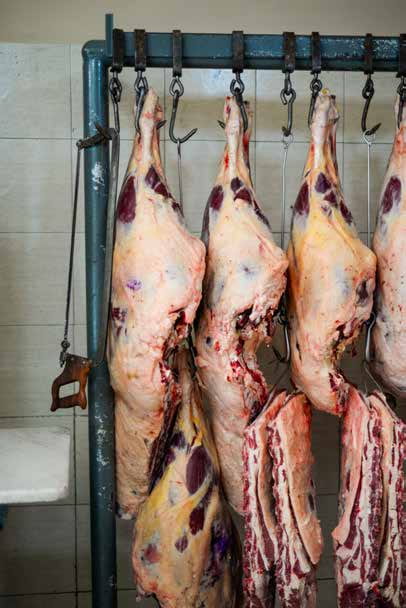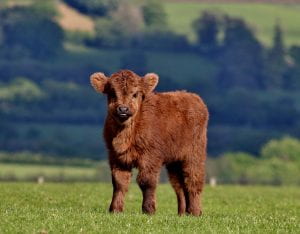 From Sarah Noggle, Extension Educator, Agriculture, and Natural Resources, Paulding County with an excerpt from Michael Schweinsberg, Extension Educator, 4-H Youth Development, Paulding County’s blog post.
From Sarah Noggle, Extension Educator, Agriculture, and Natural Resources, Paulding County with an excerpt from Michael Schweinsberg, Extension Educator, 4-H Youth Development, Paulding County’s blog post.
This week is one of my favorite weeks of the year, but this year this week is bittersweet. Usually, the first county fair in the State of Ohio, our fairgrounds and barns, are sitting empty. You won’t hear the laughter of 4-H and FFA members from the barns.
 Our hats go off to the Paulding County Sr. and Jr. Fairboards as this tough decision was made a few weeks ago. The economic impact on the fair board with social distancing and other guidelines made it almost economically impossible to hold the fair. While this situation does stink, especially, because fair is where my heart is personally every summer. This is because of the connections I have developed over the years. While this year’s pandemic has put a wrench in the fair plan, the plan was already in another person’s hands that we have learned to live by faith with.
Our hats go off to the Paulding County Sr. and Jr. Fairboards as this tough decision was made a few weeks ago. The economic impact on the fair board with social distancing and other guidelines made it almost economically impossible to hold the fair. While this situation does stink, especially, because fair is where my heart is personally every summer. This is because of the connections I have developed over the years. While this year’s pandemic has put a wrench in the fair plan, the plan was already in another person’s hands that we have learned to live by faith with.
Our Paulding County 4-H and FFA members are some of the best kids around. They are hard-working, honest, community-serving, and they look out for each other. While 4-H and FFA are looking different in 2020, these youth are still alive and resilient. They have learned one of the hardest lessons in life through the COVID-19 Pandemic. Many of our county youth have completed all the requirements (quality assurance, skillathon, livestock record keeping books, club or chapter meetings, community service, and a demonstration) to exhibit and show an animal at the county fair in a typical year. They didn’t give up even though the fair was canceled.
 Our Paulding County 4-H and FFA members have managed to shine through their respective organization mottos – “To Make the Best Better” (4-H) and “Learning to Do, Doing to Learn, Earning to Live and Living to Serve” (FFA). These youth are learning the true meaning of livestock markets today. They are seeing what it is like to be raising livestock in a lower economy. The child and their families who have completed these projects have more than likely thought through, “What are they in this for, and what do they hope to gain?”
Our Paulding County 4-H and FFA members have managed to shine through their respective organization mottos – “To Make the Best Better” (4-H) and “Learning to Do, Doing to Learn, Earning to Live and Living to Serve” (FFA). These youth are learning the true meaning of livestock markets today. They are seeing what it is like to be raising livestock in a lower economy. The child and their families who have completed these projects have more than likely thought through, “What are they in this for, and what do they hope to gain?”

As a 4-H advisor, I have heard from parents comments like, “I am glad my kids had animals in the barn to keep them working during quarantine; My kids have a reason to get up on time and stay active; These are still some of the best life lessons; I am glad for these animals because my kids would have probably been playing video games during all this time at home; These animals are truly providing food for our family; This isn’t at all about winning, it’s about life lessons.”
As a mom to two current 4-Hers/FFA member, I wish they could be at their favorite vacation spot of the year, but I know these kids will be okay. They are alive and healthy. They are still members of this community. They have learned some of the best but hardest lessons in life. It’s how they handle these lessons that make them stronger.

While the youth might now be showing animals this week, they are learning more significant lessons in life. They are still learning:
- Citizenship in our community
- Effective Leadership Skills
- Goal Setting
- Sense of Belonging
- Independence
- Mastery
- Generosity
The youth have learned it’s not about the ribbon, prize, or trophy. It’s not about winning because you spent thousands and thousands of dollars on an animal or for bragging rights. Those things aren’t what the kids remember from the county fair.
 They remember the good times. They are truly missing out on being with their fellow 4-Hers and FFA members. They are missing out on the non-related family bonding with the friendships they developed over the years at the fair. It’s the club booths and floats (which they sometimes complain about doing), then walking down the up and down the midway, hanging out in the barns, it’s the FFA Sausage Sandwiches, the Grover Hill Homemade Ice Cream, and the safety of our small hometown fair. It’s seeing our community pull together for the greater good, whether it’s physical labor or monetary donations.
They remember the good times. They are truly missing out on being with their fellow 4-Hers and FFA members. They are missing out on the non-related family bonding with the friendships they developed over the years at the fair. It’s the club booths and floats (which they sometimes complain about doing), then walking down the up and down the midway, hanging out in the barns, it’s the FFA Sausage Sandwiches, the Grover Hill Homemade Ice Cream, and the safety of our small hometown fair. It’s seeing our community pull together for the greater good, whether it’s physical labor or monetary donations.
Our Paulding County Fair is not the largest or flashiest in the state, but it’s ours, and we value it. Our Paulding County agricultural community is robust. The loyalty and camaraderie among us are more significant than words can describe. Reach out to your 4-H and FFA members and their families this week. While there is not an official livestock sale, our kids still have outlets for their livestock projects. If you would even like to support the 4-H or FFA members, please see the form below.
 A special Thank you to all those still working so hard for our 4-H and FFA youth – 4-H Educator – Michael Schweinsberg; Jr. Fairboard Advisors– Tony Miller, Abram Klopfenstein, Luke Jackson, Pam White; Sr. Fairboard Members – Dan Howell, Heather Cooper, Kenny Speice, Lori Davis, Gus Davis, Bruce Farquhar, Corey Carnahan, Luke Jackson, Abram Klopfenstein, Francis Saxton, Sue Miller, Mel White, Austin Howell, Jacob Turner, Randy Tressler, Jonathon Rose, Lisa Hefner, Brian Yenser, Austin Conlon; 4-H Advisors-Brittany Clevenger, Austin Conlon, Heather Cooper, Suzanne Cooper, Brenda Doster, Erin Finfrock, Lindsay Franklin, Ruth Graham, Amanda Grimes, Lisa Hefner, Dorothy Hoagland, Alexis Howell, Dan Howell, Deb Howell, Jandra Kilgore, Cherry Klopfenstein, Jerry Klopfenstein, Mary Kupfersmith, Julie McCloud, Nikki McClure, Mandy Miller, Sue Miller, Ryan Noggle, Jerrolyn Parrett, Linda Reineck, Lindsay Schabbing, Beth Schweinsberg, Pat Spitnale, Amanda Stoller, Tracy Trausch, Gina Weidenhamer, Pam White, Deb Wiley, Krisi Williams, Jennifer Workman, Hillary Zijlstra, Amber Zuber; FFA Advisors-Staci Miller, Lori Heiby, Jacquelin Mosier and Mike Miller; Hats off to each and everyone of you. You are all a part of helping these youth grow and succeed.
A special Thank you to all those still working so hard for our 4-H and FFA youth – 4-H Educator – Michael Schweinsberg; Jr. Fairboard Advisors– Tony Miller, Abram Klopfenstein, Luke Jackson, Pam White; Sr. Fairboard Members – Dan Howell, Heather Cooper, Kenny Speice, Lori Davis, Gus Davis, Bruce Farquhar, Corey Carnahan, Luke Jackson, Abram Klopfenstein, Francis Saxton, Sue Miller, Mel White, Austin Howell, Jacob Turner, Randy Tressler, Jonathon Rose, Lisa Hefner, Brian Yenser, Austin Conlon; 4-H Advisors-Brittany Clevenger, Austin Conlon, Heather Cooper, Suzanne Cooper, Brenda Doster, Erin Finfrock, Lindsay Franklin, Ruth Graham, Amanda Grimes, Lisa Hefner, Dorothy Hoagland, Alexis Howell, Dan Howell, Deb Howell, Jandra Kilgore, Cherry Klopfenstein, Jerry Klopfenstein, Mary Kupfersmith, Julie McCloud, Nikki McClure, Mandy Miller, Sue Miller, Ryan Noggle, Jerrolyn Parrett, Linda Reineck, Lindsay Schabbing, Beth Schweinsberg, Pat Spitnale, Amanda Stoller, Tracy Trausch, Gina Weidenhamer, Pam White, Deb Wiley, Krisi Williams, Jennifer Workman, Hillary Zijlstra, Amber Zuber; FFA Advisors-Staci Miller, Lori Heiby, Jacquelin Mosier and Mike Miller; Hats off to each and everyone of you. You are all a part of helping these youth grow and succeed.
— Sarah Noggle, Extension Educator, Agriculture, and Natural Resouces, Paulding County.
Excerpt from the 4-H Blog – The link below will open the 2020 Paulding County Jr. Fair Buyer Add-On packet. On behalf of all Paulding County youth and volunteers, we thank you for your continued support of our 4-H and FFA youth. Please note that the address for payment has changed for this year. The address to send the form and payment is located on the add-on form.
2020 Buyer Add-On Packet




 A team of Ohio State business and meat science specialists has compiled a Meat Processing Business Tool Kit for people who are exploring the meat processing business. Designed as a decision-making aid for people exploring investing in or expanding a meat processing facility, this online tool kit can help entrepreneurs evaluate the business and navigate business planning. The Meat Processing Business Tool Kit may be found
A team of Ohio State business and meat science specialists has compiled a Meat Processing Business Tool Kit for people who are exploring the meat processing business. Designed as a decision-making aid for people exploring investing in or expanding a meat processing facility, this online tool kit can help entrepreneurs evaluate the business and navigate business planning. The Meat Processing Business Tool Kit may be found 














